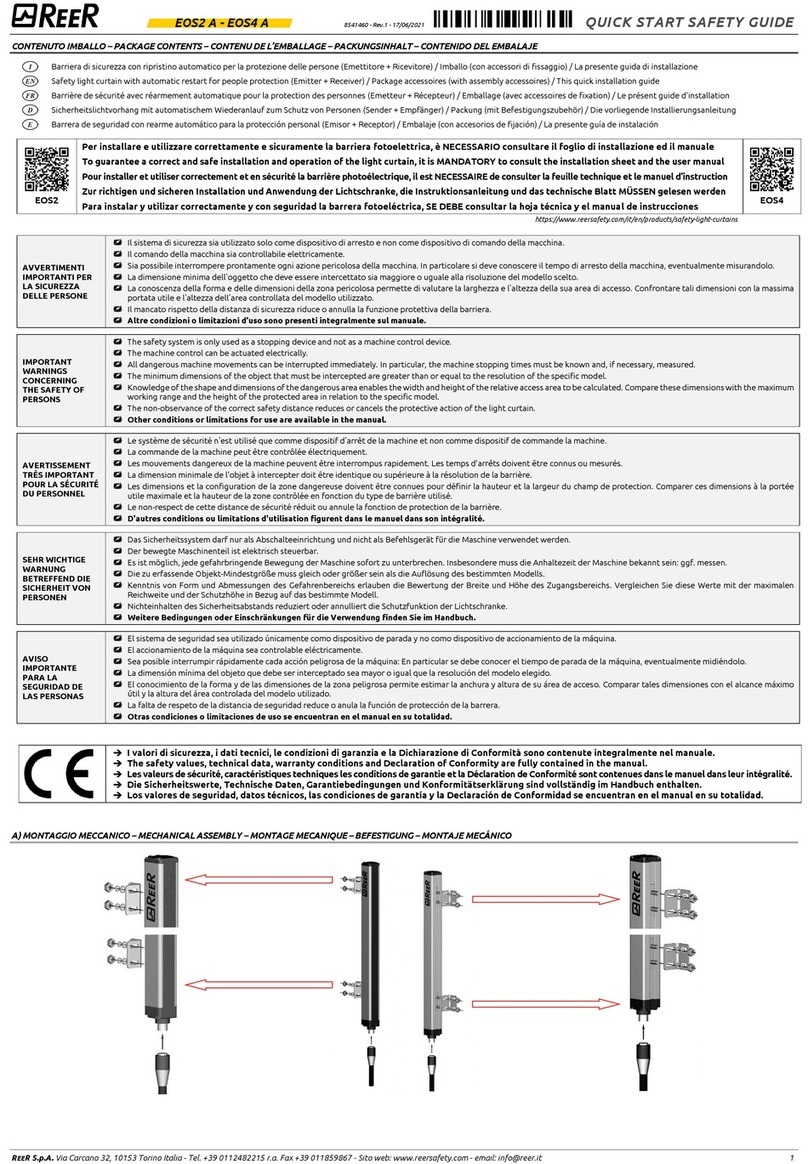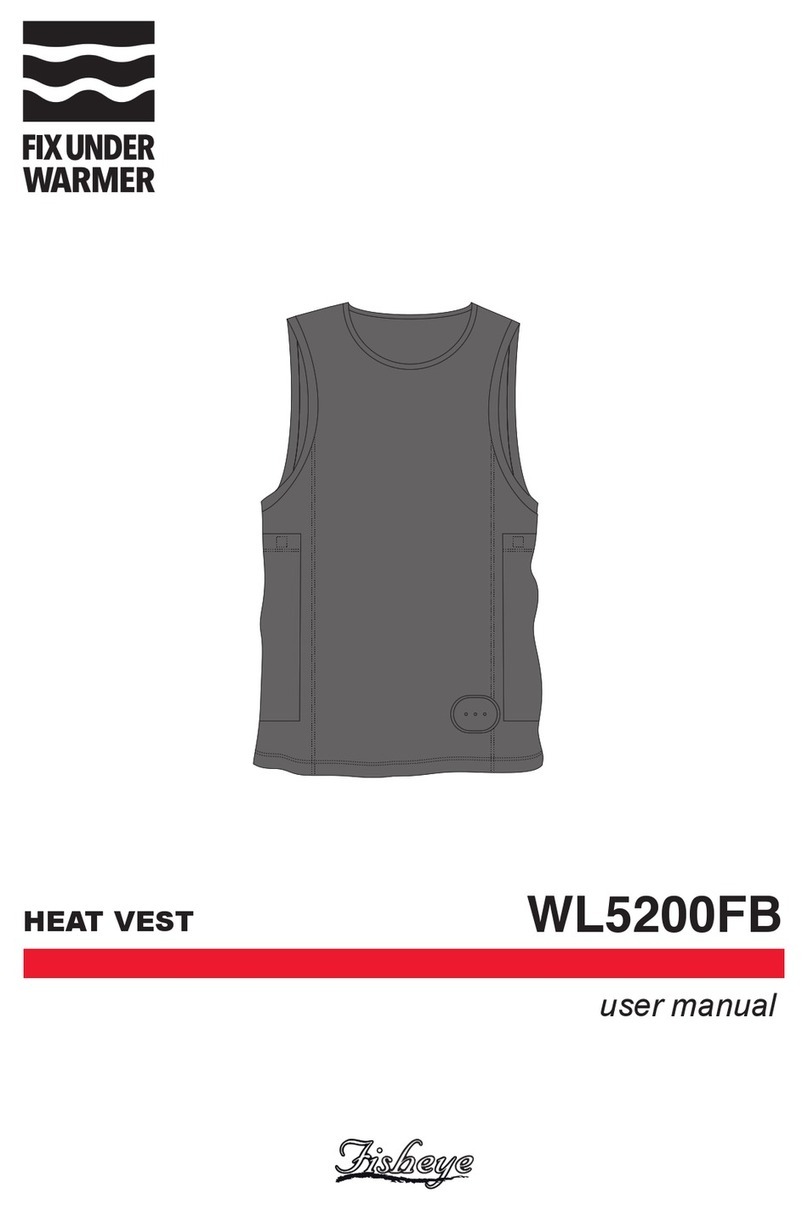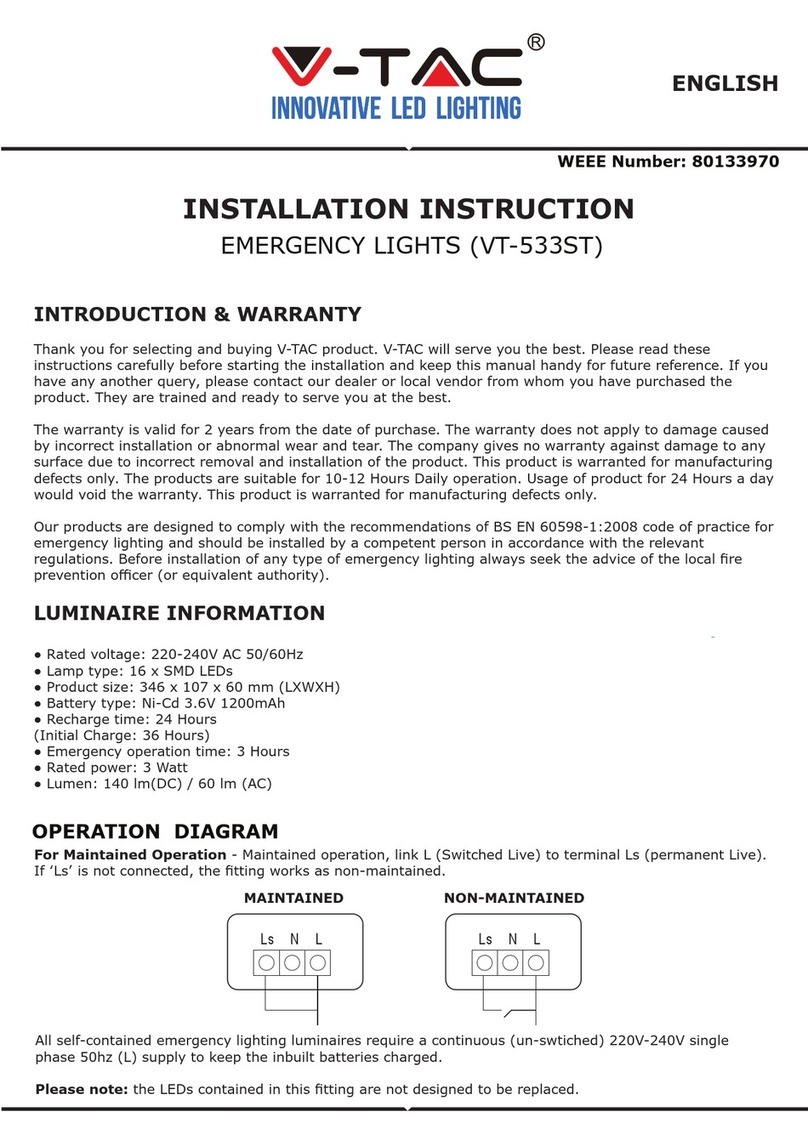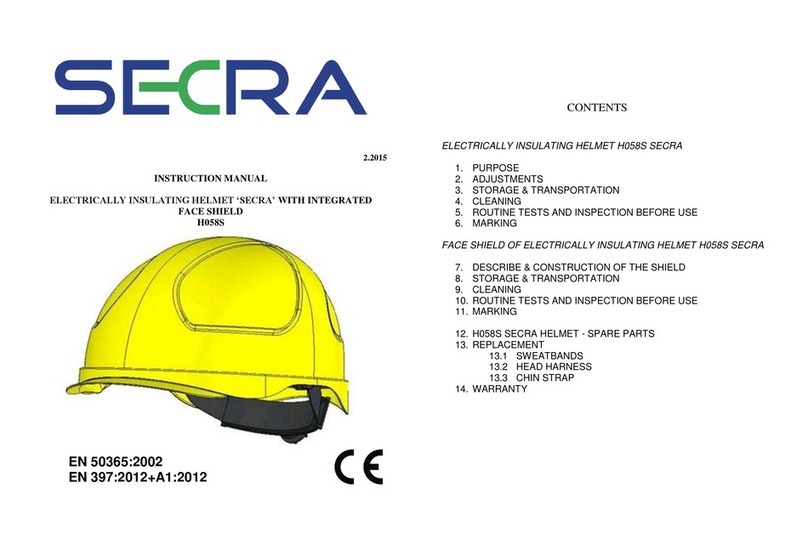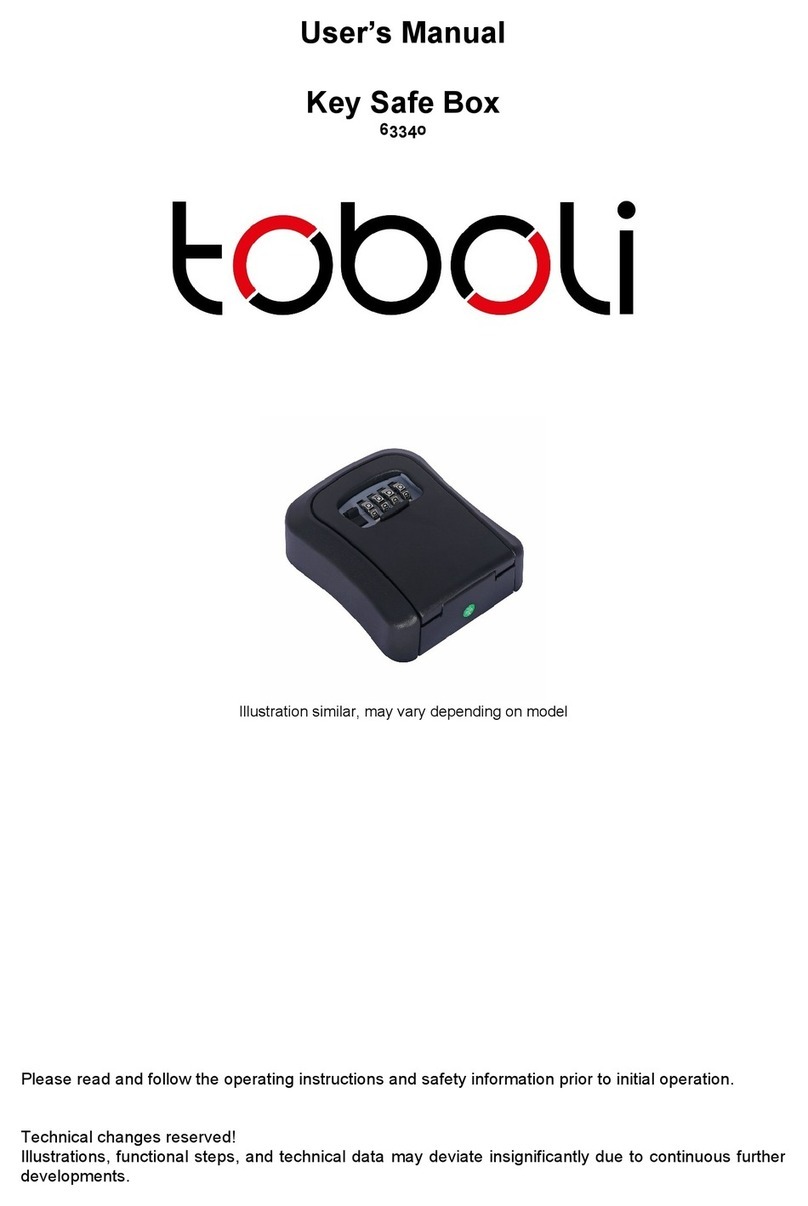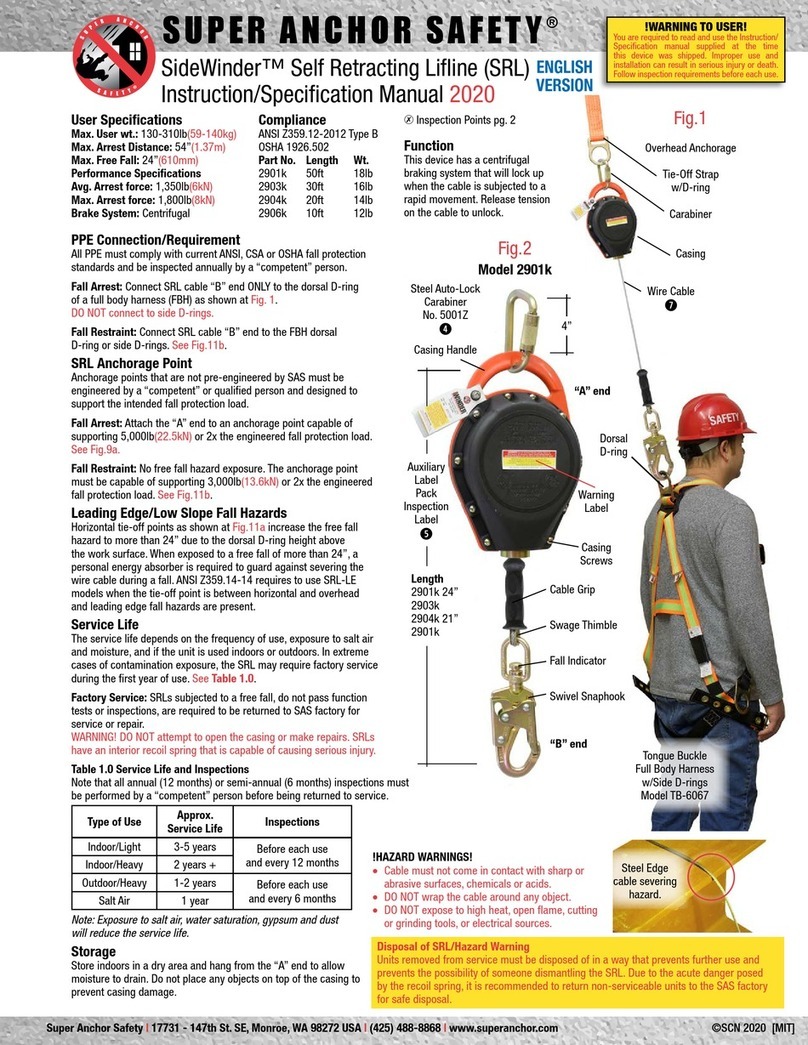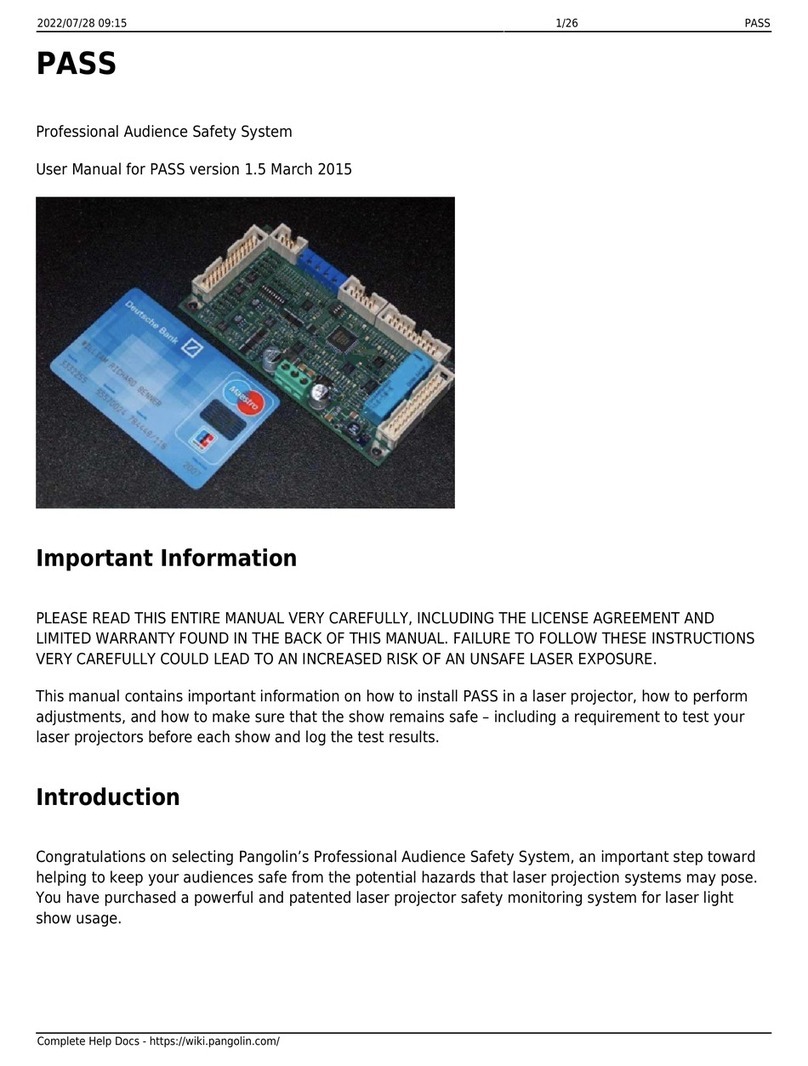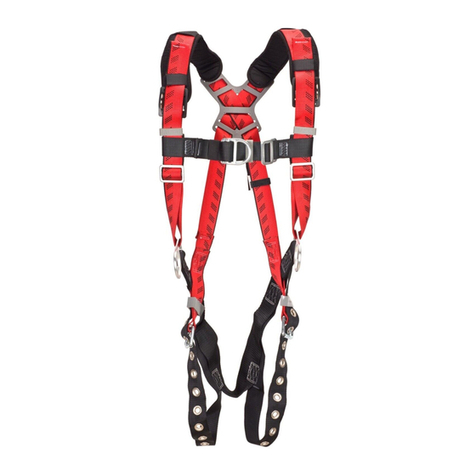LINQ RES-Q Operator's manual

Part Code: RESQKIT
USER INSTRUCTION MANUAL
12.The casualty can now be lowered to a point of safety.
OR AS FOLLOWS:
In order to carry out a rescue the rescuer requires a harness with a front point of attachment.
If the anchor point for the RES-Q Rescue Kit is such that the casualty must be lowered, then
the rope length in the kit must be four times the distance from the anchorage to the point of safety.
INSPECTION & EXAMINATION:
Keep these instructions, or a copy with the RES-Q Rescue Kit to aid future inspection,
& examination.
The equipment must be given a visual and tactile inspection when delivered to site/works, & before
every use. We recommend recorded inspection by a competent person every 6 months.
Particular attention should be paid to the following:
Metal-ware & Rope:
Inspect for signs of damage/distortion/corrosion, & correct operation & locking of connectors.
Examine for any signs of wear/abrasion, including inter strand wear, unraveling, extension and fusion.
Local abrasion as distinct from general wear may be caused by the passage of the rope over sharp
edges or protrusios while under tension & may cause serious loss of strength. Slight damage to outer
fibers & occasional yarn may be considered harmless but any reduction in diameter of the rope
or serious distortion to the sheath pattern should lead to rejection.
All Personal Protective Equipment should be immediately removed from service after being subjected
to any shock or if there is any doubt about its condition.
The RES-Q Rescue Kit may be cleaned if required. The following procedure must be adhered to:
•Use a mild detergent with hand hot water.
•Use a cloth, or sponge to wipe the RES-Q Rescue Kit & avoid over wetting.
•This procedure should then be repeated with clean water to rinse.
•Then allow drying naturally away from any direct heat source.
If you require more information please contact LINQ.
All equipment should be stored and transported with the following precautions:
•Prevent contact with sharp objects.
•Keep away from harmful substances.
•Keep in a cool dry place free from direct sunlight.
WRB Nominees Pty Ltd ABN 68 008 801 072
Paramount Safety Products: 12 Fellowship Rd, Gnangara WA Australia. Ph: 9301 7888
3.

Do not skip this instruction manual. Read the instruction manual carefully before using
the equipment. If failed in doing so it may cause serious injury or death.
WRB Nominees Pty Ltd ABN 68 008 801 072
Paramount Safety Products: 12 Fellowship Rd, Gnangara WA Australia. Ph: 9301 7888
The Instruction applies to the following Model: RESQKIT
INTRODUCTION:
LINQ introduces the RES-Q Rescue Kit specifically designed for rescuing a suspended casualty from
Fall Arrest Lanyards, Rope Safety Lines & Fall Arrest Blocks, all possible from a point of safety.
The 4:1 Haulage Kit comes complete with Aluminium Double Pulleys (IRSR-DP),
Steel Karabiner (KDASA22), Kernmantle Rope (RK050-11W), Rope Clamp (RESQRC-RH), Telescopic
Pole (RESQP), Aluminium Rebar Hook (HSASHD), Anchorage Webbing Sling (HSASIL12-O), Descender
(RESQDEC) & a Sturdy Bag (RESQBAG) with Sling for easy carrying.
The idea of the RES-Q Rescue Kit is to provide a rescue kit that will enable a rescuer to:
The above capabilities are all achievable without the need for the rescuer to access the casualty.
In order to carry out this the rescuer must be able to access the point at which the casualty
has anchored their lanyard. The control feature of the rescue kit locks automatically if released.
The RES-Q Rescue Kit will be used in two different modes depending upon whether the anchor point
is at the rescuer’s foot level or above (being 1.5 m above to have any material effect), as this
has important effects.
If the anchor is at foot level then the system will not be able to raise the casualty sufficiently to bring
them back to their start point. The casualty must be raised in order to release their lanyard, then
lowered to a safe ground. Also the rescuer is required to use their strength when raising the casualty,
so the mechanical advantage is greater (4:1).
If the anchor is 1.5 m above foot level, preferably at head height it will be possible to raise
the casualty to their start point. By this the rescuer is able to use their weight to assist
in the operation with mechanical advantage of (4:1).
Attach a casualty
who is suspended by a fall
arrest lanyard.
Raise the casualty
in order to release their
current attachment.
Raise or lower
the casualty to a point
of safety.
LOW ANCHOR:
Anchorage at foot level:
1. Access casualty’s anchorage point.
2. Attach the anchor sling to a suitable anchor point above the casualty.
3. Aluminium Double Pulley (IRSR-DP) is connected to the Anchorage sling with required length
of Rope already installed into it in a ratio of 4:1. (The rescuer’s weight is used to assist
in the operation.)
4. Adjust Telescopic Pole (RESQP) to the required length.
5. Attach the Aluminium Double Pulley (IRSR-DP) at the lower end to the eye of Rebar Hook (HSASHD)
at Telescopic Pole. Set the Gate of Rebar Hook to open condition.
6. Adjust ropes in-between the pulleys to the same length as the pole.
7. Using the pole, attach the Rebar Hook to the casualty’s Dorsal Attachment of Harness.
8. Remove the pole from the Rebar Hook.
9. Attach the Rope Clamp (RESQRC-RH) to the rope at the end of rescuer.
10.The rescuer now sits down, thus raising the casualty.
11.Once the casualty’s weight has been transferred to the RES-Q Rescue Kit, then their lanyard
can be disconnected.
3. Double Aluminium Pulley (IRSR-DP)
is connected to the Anchorage sling with
required length of Rope already installed into
it in a ratio of 4:1. (The rescuer’s weight is used
to assist in the operation.)
4. Adjust Telescopic Pole (RESQP) to the
required length.
5. Attach the Aluminium Double Pulley (IRSR-DP)
at the lower end to the eye of Rebar Hook
(HSASHD) at Telescopic Pole. Set the Gate
of Rebar Hook to open condition.
6. Adjust ropes in-between the pulleys to the same
length as the pole.
7. Using the pole, attach the Rebar Hook
to the casualty’s Dorsal D-Ring of Harness.
8. Remove the pole from the Rebar Hook.
9. Attach the Rope Clamp (RESQRC-RH) to the rope
at the end of rescuer.
10.The rescuer now sits down, thus raising
the casualty.
11.Once the casualty’s weight has been transferred
to the RES-Q Rescue Kit, then their lanyard
can be disconnected.
12.The casualty can now be raised to a point
of safety or lowered.
OR AS FOLLOWS:
In order to carry out a rescue the rescuer requires
a harness with a front point of attachment.
If the anchor point for the RES-Q Rescue Kit is such
that the casualty must be lowered, then the rope
length in the kit must be four times the distance
from the anchorage to the point of safety.
INSTALLATION & USER INSTRUCTIONS:
HIGH ANCHOR:
Anchorage more than 1.5 m above the foot level:
1. Access casualty’s anchorage point.
2. Attach the anchor sling to a suitable anchor
point above the casualty.
1. 2.
This manual suits for next models
1
Popular Safety Equipment manuals by other brands
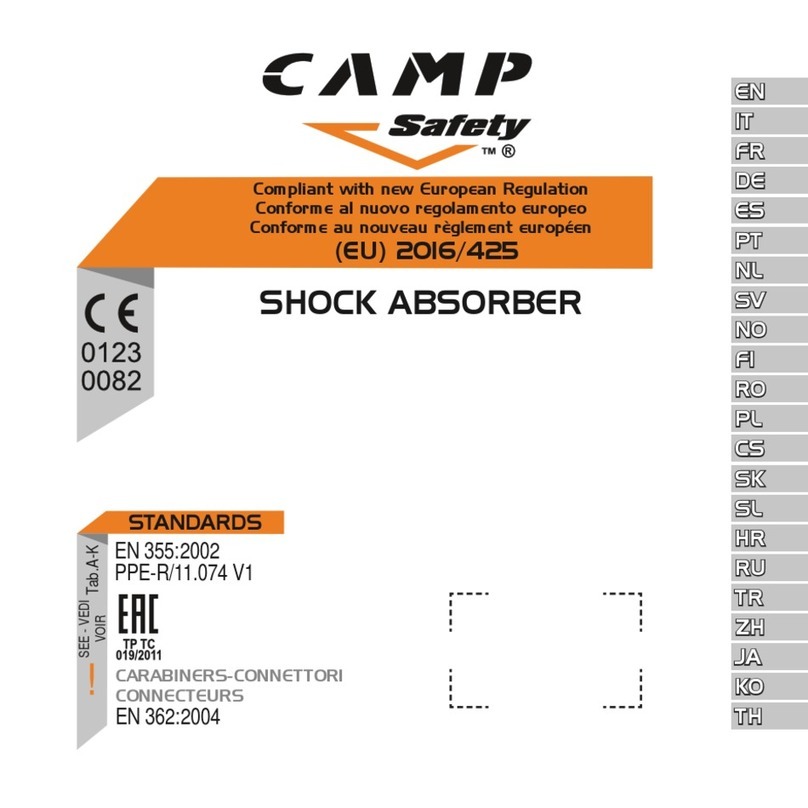
Camp Safety
Camp Safety 50301 manual
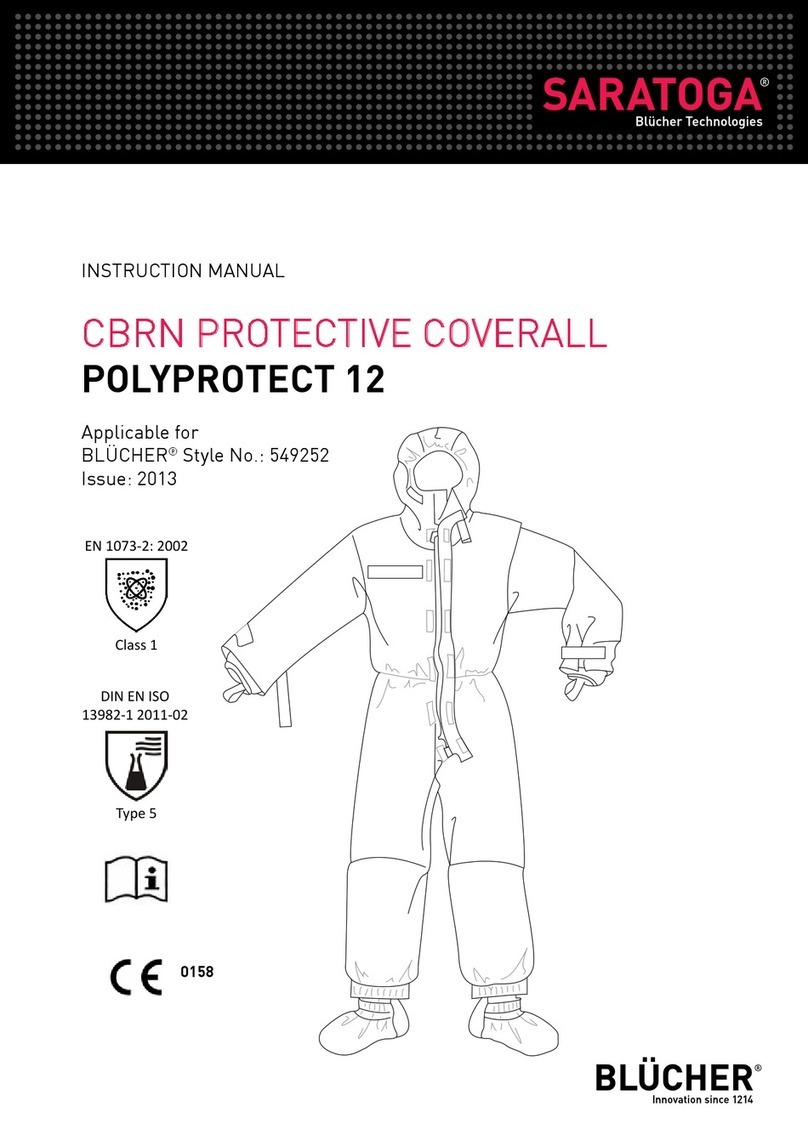
BLUCHER
BLUCHER SARATOGA CBRN PROTECTIVE COVERALL instruction manual
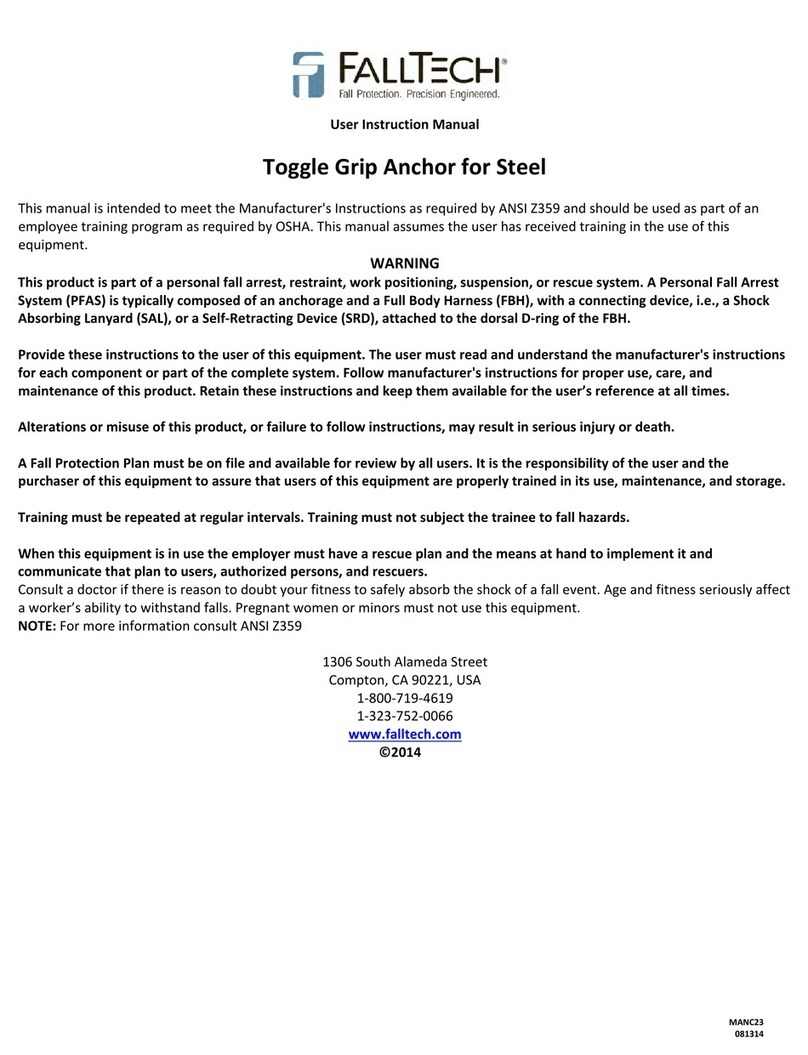
Falltech
Falltech 7408 User instruction manual

Innova
Innova IN-8012 Instruction and safety manual
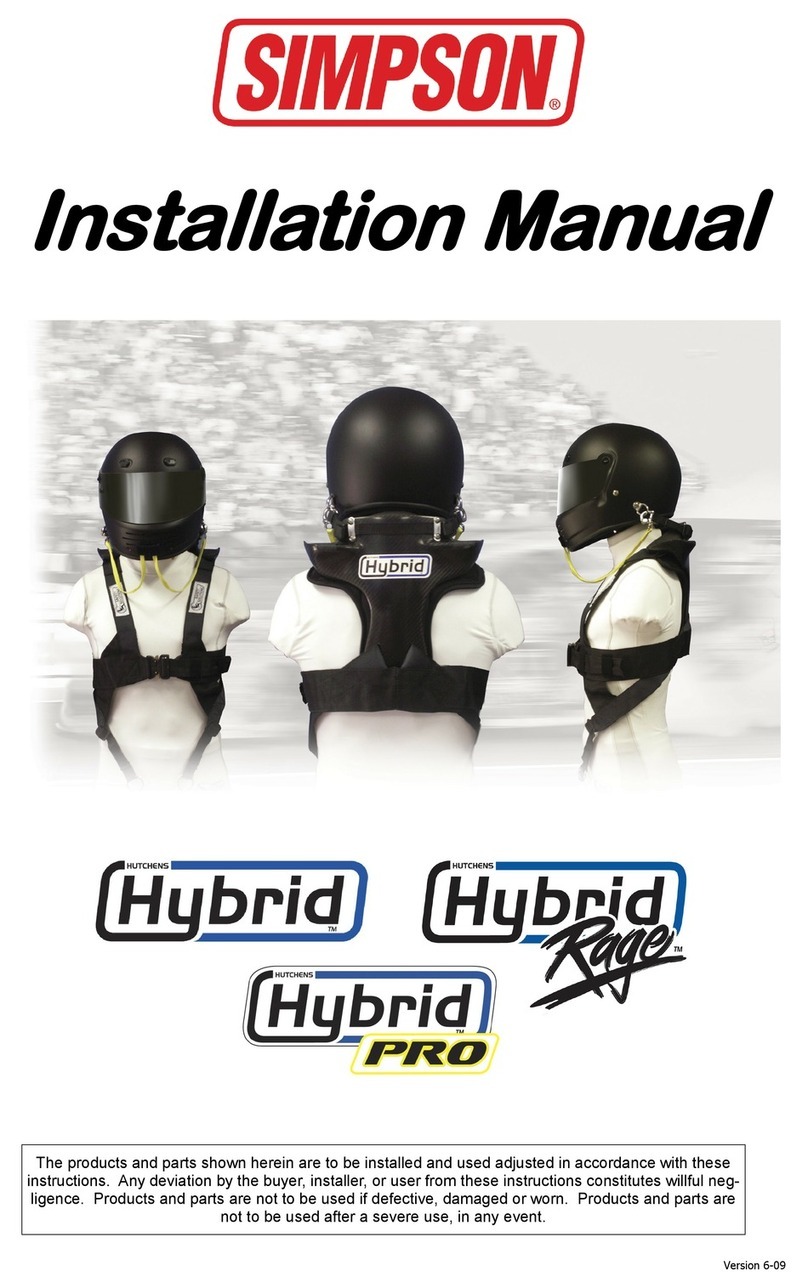
Simpson
Simpson Hybrid Pro installation manual

Black Diamond Equipment
Black Diamond Equipment Camalot C3 Instructions for use
